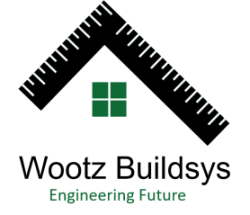
Education is changing. This means schools and university must improve and remodel their buildings to keep up. Pre-Engineered Buildings (PEB), a new kind of construction, has changed the way universities are being built. PEBs offer benefits that universities need. This blog will discuss why PEBs are great for university construction.
Key Features of PEB Construction for University:

Design Flexibility:
PEB construction for university offers exceptional design flexibility, allowing architects and planners to create customized layouts that cater to the diverse needs of the institution. From lecture halls and laboratories to student housing and administrative buildings, PEB systems can be tailored to accommodate a wide range of academic and support facilities.
Structural Integrity:
University buildings often need to withstand heavy loads, such as large gatherings, specialized equipment, and potential seismic activity. PEB Construction for University utilizes high-quality steel and advanced engineering to provide robust structural integrity, ensuring the safety and longevity of the buildings.
Rapid Construction:
The prefabricated nature of PEB Construction for University significantly reduces the construction timeline for university projects. The off-site fabrication of components, combined with simultaneous site preparation, allows for a faster completion of the project, minimizing disruption to ongoing campus activities.
Cost-Effectiveness:
PEB construction offers cost-effective solutions for universities, with reduced material waste, lower labor expenses, and streamlined construction processes. This translates into significant savings for the institution, allowing them to allocate resources more efficiently towards educational and research initiatives.
Sustainability and Energy Efficiency:
More and more, universities care about staying green, and PEB building fits the bill. Using materials we can recycle, systems that save energy, and adding in renewable energy like solar panels, PEB building is a top pick for colleges looking to be eco-friendly.
Adaptability and Expansion:
As universities grow and evolve, their infrastructure needs to keep pace. PEB construction offers remarkable adaptability, allowing for easy future expansions or modifications to existing buildings. This flexibility ensures that the university’s facilities can adapt to changing requirements without major disruptions or excessive costs.
Benefits of PEB Construction for Universities:
Enhanced Campus Experience:
PEB construction can create modern, visually appealing, and functional buildings that contribute to an improved campus experience for students, faculty, and visitors. This can positively impact the university’s reputation and attract top talent.
Improved Learning Environments:
The design flexibility of PEB Construction for University enables the creation of specialized learning spaces, such as state-of-the-art laboratories, cutting-edge classrooms, and collaborative study areas, enhancing the overall educational experience.
Faster Project Delivery:
The rapid construction timeline associated with PEB projects allows universities to quickly meet their infrastructure needs, whether it’s building new facilities or renovating existing ones, without significant disruptions to ongoing academic and research activities.
Lower Maintenance Costs:
The durability and corrosion-resistant nature of PEB construction translate into reduced maintenance requirements over the building’s lifespan, allowing universities to allocate resources towards other priorities
Scalable and Modular Approach:
PEB construction’s modular design enables universities to easily scale their facilities up or down, accommodating changes in student enrollment, research demands, or other evolving needs.
Conclusion:
PEB Construction for University is a transformative solution for universities, offering a compelling blend of design flexibility, structural integrity, cost-efficiency, and sustainability. By leveraging these features, universities can create modern, adaptable, and functional infrastructure that enhances the overall campus experience and supports their academic and research goals. As the education sector continues to evolve, PEB construction emerges as a strategic choice for universities seeking to build innovative and future-ready facilities.
(FAQ’s) Frequently Asked Questions
Q1: What are the design benefits of PEB construction for universities?
PEB building design provides amazing adaptability perfect for universities. It supports tailored layouts and specific facilities including classrooms, labs, and dormitories. Open-layout blueprints and module designs make it simple to change for future growth and adjustments to meet changing requirements.
Q2: How does PEB construction ensure cost-efficiency for universities?
Building with PEB is wallet-friendly for colleges as it lowers waste, trims labor costs, and speeds up construction timeframes. Prepping the site while making parts off-site makes big cost cuts compared to usual construction tactics.
Q3: What are the sustainability features of PEB construction for universities?
PEB construction aligns well with the sustainability goals of universities. It utilizes recyclable materials, offers the integration of energy-efficient systems, and enables the incorporation of renewable energy sources like solar panels. This makes PEB an environmentally-friendly choice for university buildings.
Q4: How does PEB construction ensure rapid project delivery for universities?
The prefabricated nature of PEB construction allows for faster project completion. With off-site fabrication of components and simultaneous site preparation, universities can significantly reduce the construction timeline and minimize disruption to ongoing campus activities.
cabe4d rimbatoto rimbatoto togel online toto togel toto togel situs toto jacktoto situs toto jacktoto situs slot situs toto slot gacor jacktoto jacktoto slot online


